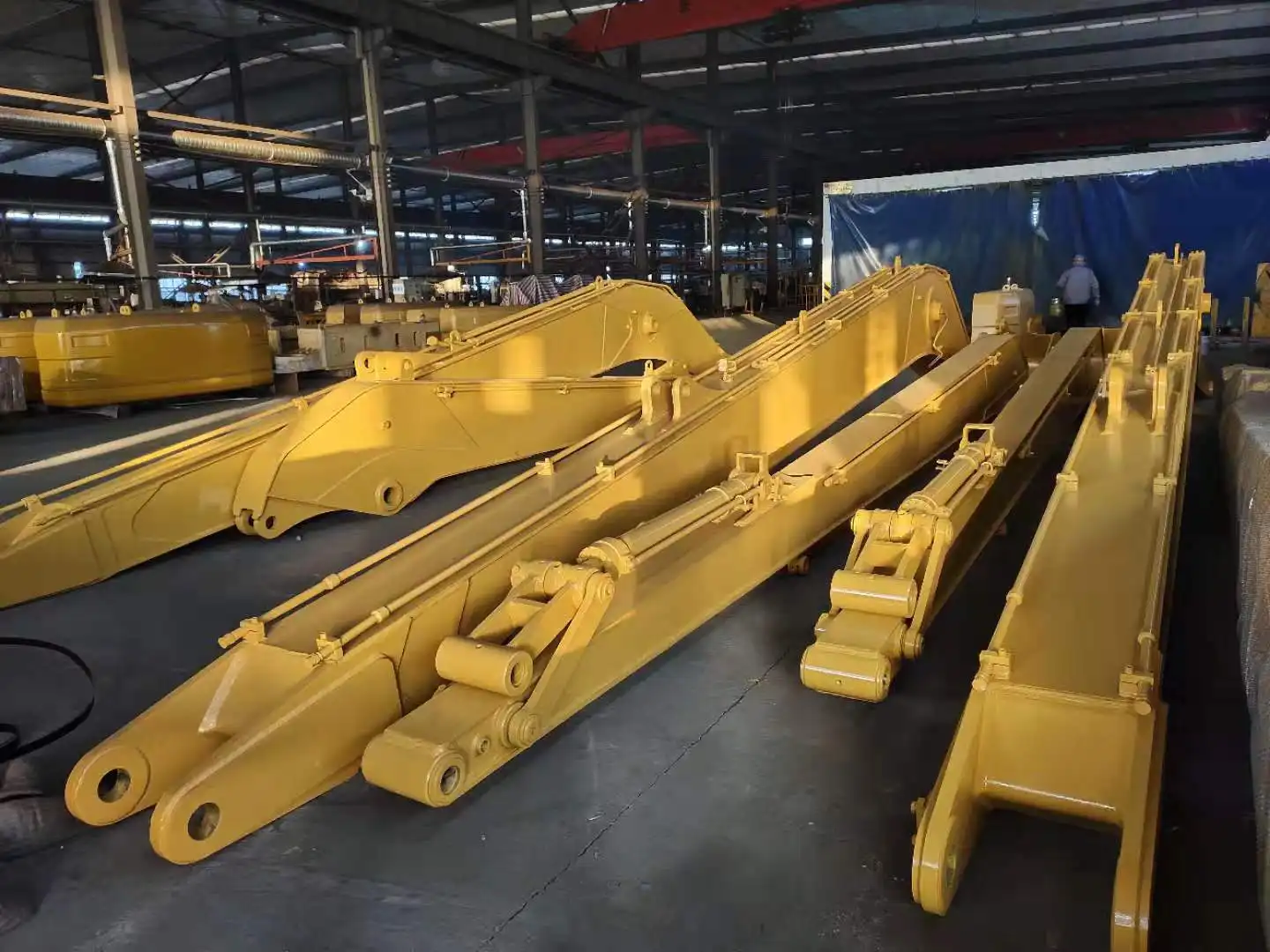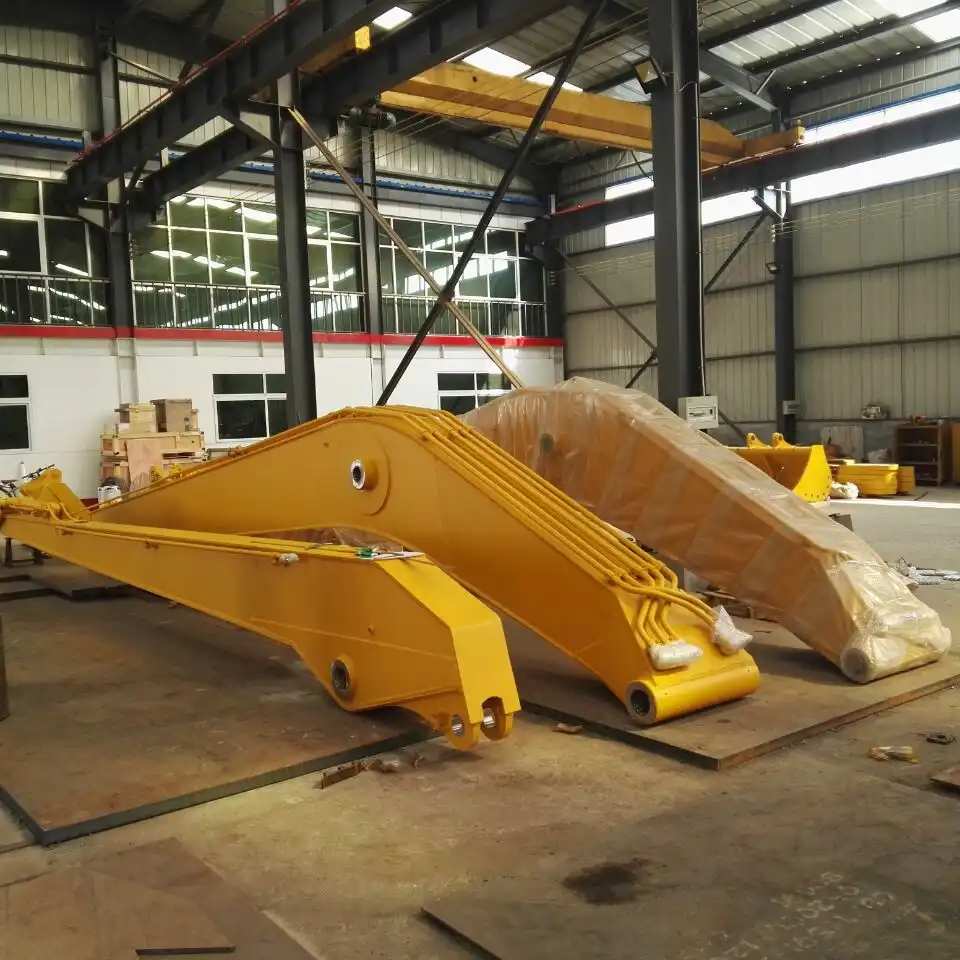How does an excavator arm work?
The excavator arm functions through a sophisticated hydraulic system that transforms pressurized fluid into precise mechanical movement. This mechanism allows operators to control massive forces with incredible accuracy, making excavators indispensable across railway construction, mining operations, and demolition projects. The arm's design integrates multiple hydraulic cylinders, control valves, and mechanical joints that work in harmony to deliver the lifting, digging, and positioning capabilities essential for heavy construction work.
Hydraulic System: How Does Hydraulics Generate Force?
Pascal's Principle in Action
The foundation of every excavator arm lies in Pascal's principle, which states that pressure applied to a confined fluid transmits equally in all directions. When your machine's engine drives the hydraulic pump, it creates pressurized hydraulic fluid that flows through carefully designed circuits to power the arm's movement. This pressurized fluid, typically specialized hydraulic oil, carries tremendous energy that can be precisely controlled and directed to where it's needed most.
Think of hydraulic fluid as the lifeblood of your excavator arm. The system operates under pressures ranging from 3,000 to 6,000 PSI, transforming relatively small input forces at the pump into massive output forces at the arm cylinders. This multiplication effect allows a single operator to control movements that would otherwise require enormous mechanical advantage through complex gear systems.
Hydraulic Cylinders and Force Generation
The heart of excavator arm movement lies within its hydraulic cylinders, where pressurized fluid pushes against piston heads to create linear motion. Each cylinder contains a precisely machined piston connected to a rod that extends and retracts based on fluid pressure direction. When hydraulic fluid enters one side of the cylinder, it forces the piston to move, extending or retracting the rod with tremendous force.
Modern excavator arms typically incorporate three primary cylinders: the boom cylinder for vertical lifting, the arm cylinder for reach extension, and the bucket cylinder for digging and dumping actions. Each cylinder operates independently yet coordinates with others to achieve complex movements. The cylinder bore diameter directly influences force output – larger diameters generate more force but require greater fluid volumes, creating engineering trade-offs between power and speed.

Controlling Movement
Joystick Control Systems
Modern excavator arms respond to operator commands through sophisticated joystick control systems that translate hand movements into precise hydraulic actions. When you move a joystick, you're actually controlling pilot hydraulic valves that direct main system fluid flow to specific cylinders. This pilot control system provides the mechanical advantage needed to control massive hydraulic forces with minimal physical effort from the operator.
Each joystick movement corresponds to specific arm functions – forward and backward motions typically control arm extension and retraction, while left and right movements manage boom lifting and lowering. The beauty of this system lies in its proportional control capability, where small joystick movements create gentle arm motions, while full joystick deflection produces maximum speed and force output.
Valve Control Technology
The magic behind smooth excavator arm operation happens within the main control valve, often called the pilot valve or control block. This sophisticated component houses multiple spool valves that precisely regulate hydraulic fluid flow to each cylinder based on operator input. When you operate the joystick, pilot pressure shifts these spools, opening and closing passages that direct fluid flow.
Modern control valves incorporate advanced features like load-sensing technology, which automatically adjusts system pressure based on actual work requirements. This intelligent pressure management reduces energy consumption while maintaining the responsive feel that skilled operators expect. Some systems even include electronic override capabilities that allow programmed movement patterns for repetitive tasks.
Coordinated Motion
Multi-Cylinder Coordination
Achieving smooth, coordinated movement requires precise synchronization between the boom, arm, and bucket cylinders that make up your excavator arm assembly. Unlike simple single-axis machines, excavators demand complex multi-axis coordination where several cylinders operate simultaneously to create natural, flowing motions that follow curved paths rather than jerky mechanical movements.
When you perform a typical digging motion, all three cylinders work together – the boom cylinder controls vertical position, the arm cylinder manages reach distance, and the bucket cylinder handles cutting angle. This coordination happens through sophisticated valve timing that ensures fluid flows to multiple cylinders in precisely controlled proportions, creating the smooth arcing motions characteristic of skilled excavator operation.
Kinematic Chain Relationships
The excavator arm operates as a kinematic chain where each joint's movement affects the position and orientation of all subsequent components. Understanding these relationships helps operators develop the intuitive feel needed for efficient operation. The boom acts as the primary vertical actuator, the arm provides reach adjustment, and the bucket delivers the final positioning and work tool orientation.
Modern excavator design optimizes these kinematic relationships to maximize working envelope while maintaining acceptable force characteristics throughout the full range of motion. Engineers carefully balance cylinder sizes, mounting points, and leverage ratios to ensure consistent performance whether the arm operates close to the machine or at full extension.

FAQ
①What makes excavator arms so powerful?
Excavator arms generate tremendous force through hydraulic multiplication, where small input forces at the pump create massive output forces at the cylinders. High-pressure hydraulic fluid (3,000-6,000 PSI) combined with large cylinder bore diameters produces the lifting and digging forces needed for heavy construction work.
②How do operators control such complex movements?
Modern excavator arms use pilot control systems where joystick movements control small pilot valves that direct main hydraulic flow. This provides precise, proportional control with minimal physical effort, allowing operators to perform delicate tasks or maximum-force operations with the same control interface.
③What maintenance do excavator arms require?
Regular hydraulic fluid changes, filter replacements, and cylinder seal inspections ensure reliable operation. Checking hydraulic hoses, monitoring system pressures, and maintaining proper fluid levels prevent costly breakdowns and extend excavator arm service life significantly.
④How do multiple cylinders work together smoothly?
Sophisticated control valves coordinate fluid flow to multiple cylinders simultaneously, creating smooth arcing motions rather than jerky mechanical movements. Load-sensing systems automatically adjust pressure distribution to each cylinder based on actual working loads.
Excavator Parts For Sale
Whether you're involved in railway construction, mining operations, demolition projects, or general construction work, selecting the right arm excavator configuration significantly impacts productivity and operational efficiency. The hydraulic systems we've explored transform simple operator inputs into powerful, precise movements that make complex excavation tasks manageable and efficient.
For construction professionals seeking reliable, high-performance arm exca, Tiannuo Machinery offers comprehensive solutions tailored to diverse industry needs. Our expertise in manufacturing excavator arm assemblies, extended arms, three-section arms, and specialized attachments ensures you receive equipment designed for optimal performance in demanding applications. From standard arms to specialized long-reach configurations, our product range addresses the unique challenges faced in railway maintenance, mining operations, and precision demolition work.
Contact our technical team at rich@stnd-machinery.com for detailed specifications, customization options, and expert guidance in selecting the excavator parts solution that best matches your operational requirements. Our commitment to quality manufacturing and comprehensive after-sales support ensures your equipment delivers reliable performance throughout its service life.
References
- Liu, X., et al. "Analysis of Vibration Characteristics of Hydraulic Excavator Device Under Flat Ground Conditions." Modelling and Simulation in Engineering, 2024.
- Zhang, H., and Chen, M. "A Review on Mechanical and Hydraulic System Modeling of Excavator Manipulator System." Journal of Control Engineering, 2016.
- Johnson, R. "Hydraulic System Principles in Heavy Construction Equipment." Construction Equipment Engineering Quarterly, 2023.
- Williams, P., and Davis, L. "Advanced Control Systems for Modern Excavator Operations." Heavy Equipment Technology Review, 2024.
- Thompson, K. "Coordinated Motion Control in Multi-Axis Hydraulic Systems." Hydraulic Engineering Journal, 2023.
About Author: Arm
Arm is a leading expert in the field of specialized construction and railway maintenance equipment, working at Tiannuo Company. Tiannuo specializes in manufacturing a wide range of products, including railway maintenance equipment like railway sleeper changing machines and screening machines, excavator modification equipment such as excavator lifting cabs, various engineering arms for excavators, excavator accessories like digging buckets, and engineering vehicle auxiliary equipment like loader buckets.

